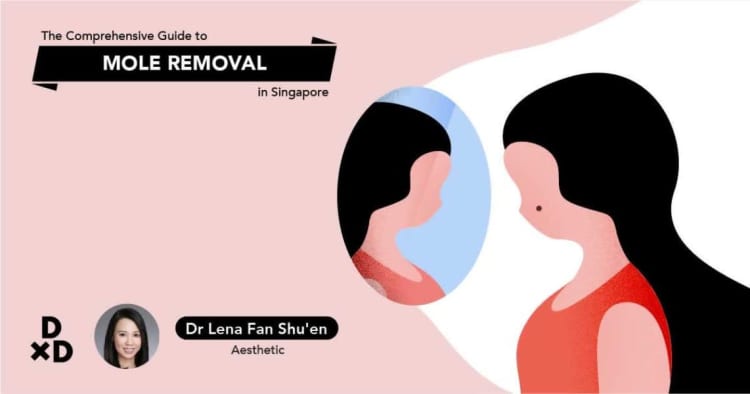It is unfortunate that you should scar after the mole removal.
Treatment of the resultant scar will depend on the type of scar left after the initial mole removal.
Most people who have undergone ablative or burning procedures can be left with a brown or darkened area, known as post-inflammatory hyperpigmentation (PIH). This could be due to a few things, including the excessive heat of the procedure, sun exposure in the few weeks preceding and post-procedure, infections of the wound during the healing phase or poor wound care. PIH is not truly a scar (if the skin is flat and flush with the normal skin) and the colour can take 6 months or sometimes more to normalise.
True scarring is when you have either a depression of the skin where the mole was removed (like a hole, known as atrophic scarring) or a new mound of skin forming over it (hypertrophic scarring or keloid formation). In this scenario, insufficient or excess collagen has formed as a result of the injury and will not subside without further intervention.
**Treatment of PIH:
**
Although PIH typically resolves after many months, there are ways to speed up its resolution.
Depending on your skin type and sensitivity, one or several of the following may be employed.
1. Topical whitening agents -- Differin, hydroquinone-based creams, kojic acid, mild acid toners
2. Pigment lasers - Q-switched lasers, done every 2-4 weeks can speed up the removal of the pigment.
3. Chemical peels - Mild chemical peels can help remove superficial skin and help in the breakdown and removal of excess pigmentation
4. Sunscreen - A must to prevent further darkening of the area
Treatment of Atrophic Scars:
For the treatment of atrophic scars, you will need to stimulate the skin and force remodelling of the collagen in the skin. This involves inducing controlled damage to the scar and its surrounding area. This can be done via various means:
1. Fractional ablative lasers: These lasers heat and mildly burn the upper part of the skin, peeling the upper layer and stimulating growth and collagen production in the dermis. This promotes resurfacing of the skin over months and will require typically 3-5 sessions over 4-5 months.
2. Picosecond resurfacing lasers: These lasers work differently from fractional ablative lasers, but similarly resurfaces scars in a safer method. You may require more sessions than when using an ablative laser, however.
3. Radio-frequency resurfacing: Uses radiofrequency to stimulate and resurface scars. Not my preferred method of scar treatment, but is safer in darker skin as well.
4. Excision of the scar: If the scar has poor response to the above, or is expected to respond poorly, a minor surgical procedure involving cutting and removing the scar can be the best and quickest solution.
Treatment of Keloids or Hypertrophic scars:
These scars form due to excessive and uncontrolled healing, resulting in raised scars. These can be blended and reduced by:
1. Steroid injections: Injected into the scar, steroids can shrink the scars and may require several sessions.
2. Fractional Ablative Lasers and light therapy: These light therapies can force remodelling of the scar and help reduce its size.
3. Surgical Excision: Again, excision is an option, but rates of recurrence of keloids after surgical excision can be high.
Sometimes, the scar from burning treatments are a combination of PIH and atrophic or hypertrophic scarring and will require several modalities of management. The neck is a particularly sensitive area and can be prone to PIH as well as keloid formation in some individuals. It is also an area we often forget to lather the sunscreen and can result in PIH formation post laser or peel treatment.
It would definitely be helpful if you have a picture for reference, though I would still advise you to get a proper and thorough physical consultation on your concerns.



